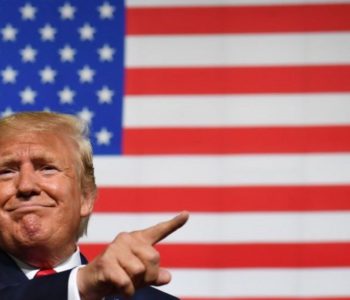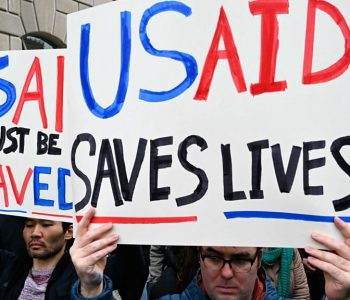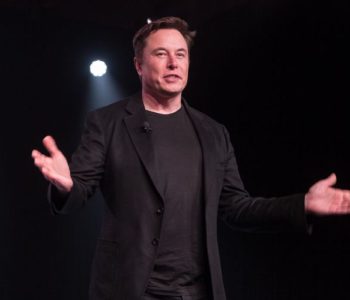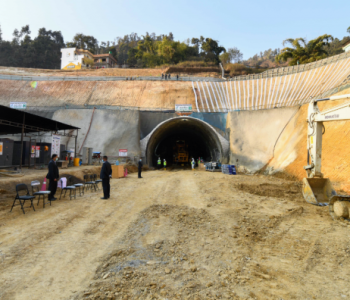The escalating US-China tariff war – why It’s happening, China’s tariff strategy, and the WTO’s role

KATHMANDU: Today’s commentary on one of the most pressing economic stories of 2025: the intensifying trade war between the United States and China. Tariffs are flying back and forth, markets are jittery, and the global economy is feeling the strain. Let’s unpack why these two economic giants are locked in this high-stakes battle, why China isn’t matching the US’s eye-popping 145% tariffs, and where the World Trade Organization stands—or stumbles—in the middle of it all.
Why the Tariff Tit-for-Tat?
The roots of this trade war stretch back years, but the current escalation is driven by a mix of economic strategy, political posturing, and deep-seated grievances. From the US side, the push for tariffs—now at a staggering 145% on Chinese goods—stems from a belief that China’s trade practices are unfair. The US accuses China of flooding markets with cheap goods, stealing intellectual property, and restricting access for American companies. There’s also the fentanyl crisis, with Washington pointing fingers at China for not doing enough to stop precursor chemicals from crossing borders. President Trump has framed these tariffs as a way to bring manufacturing back to American soil, reduce the trade deficit, and punish China for what he calls “decades of ripping off” the US economy.
China, for its part, sees these tariffs as economic bullying. Beijing argues that the US is trying to suppress its rise as a global power. In retaliation, China has slapped tariffs on US goods, targeting everything from agricultural products to tech components. This isn’t just about economics—it’s about national pride and sovereignty. China’s leaders can’t afford to look weak, especially with domestic challenges like deflation and a property slump. By hitting back, they’re signaling to their people and the world that they won’t bow to pressure.
But the tariffs aren’t just about punishment—they’re also bargaining chips. Both sides are betting that economic pain will force the other to the negotiating table. The US hopes tariffs will push companies to relocate factories stateside or to friendlier countries. China, meanwhile, wants to protect its export-driven economy while diversifying trade partners to reduce reliance on the US market. It’s a high-risk game, and so far, neither side is blinking.
Why Isn’t China Matching the US’s 145% Tariff?
Now, you might wonder: if the US is hitting China with tariffs as high as 145%, why isn’t China mirroring that number? After all, Beijing’s latest tariffs on US goods peaked at 125%. The answer lies in strategy and economic realities.
First, China’s economy relies heavily on exports—far more than the US does. In 2024, China’s trade surplus with the US was nearly $300 billion. Slapping 145% tariffs on all US goods could backfire by driving up costs for Chinese consumers and businesses, who still rely on American products like soybeans, tech, and medical equipment. China’s already grappling with domestic economic woes—deflation, a property crisis, and sluggish growth. Piling on massive tariffs could worsen inflation and alienate trading partners, making it harder to pivot to markets in Europe or Asia.
Second, China’s playing a longer game. Instead of matching the US dollar-for-dollar, Beijing’s mixing tariffs with other tools: export controls on rare earth minerals, restrictions on US companies, and anti-dumping probes. These targeted measures hurt American industries—like defense and tech—without fully disrupting China’s own supply chains. It’s a calculated move to inflict pain while keeping room for negotiation.
Finally, China’s tariffs are lower because it knows the US market is still critical. American consumers buy Chinese smartphones, toys, and clothes in huge volumes. If China overplays its hand, it risks losing market share to competitors like Vietnam or India, who are already eating into its exports. So, 125% is Beijing’s way of saying, “We’re fighting back, but we’re not burning the bridge entirely.”
The WTO’s Stance: Toothless or Just Tired?
Now, let’s turn to the World Trade Organization, the supposed referee of global trade. The WTO’s stance is clear: both the US and China are breaking the rules. The organization’s core principles—like non-discrimination and tariff caps—are being trampled. The US’s 145% tariffs and China’s 125% retaliatory duties far exceed the “bound rates” members agreed to, and China has filed multiple complaints, calling the US actions “reckless” and a violation of international trade law. The WTO has urged restraint, warning that this trade war could slash US-China trade by up to 80% and drag down global growth.
But here’s the rub: is the WTO dead on this issue? Not quite, but it’s on life support. The organization’s dispute settlement system, meant to enforce its rules, has been hobbled for years. The US, under both Trump and Biden, blocked new appointments to the WTO’s Appellate Body, leaving it unable to issue binding rulings. Without a functioning court, countries can ignore WTO complaints with little consequence. China’s filed disputes, sure, but they’re more symbolic than effective—paperwork piling up in a system that can’t deliver justice.
The WTO’s also struggling with relevance. Its rules, written decades ago, weren’t designed for today’s battles over tech, subsidies, and state-driven economies like China’s. Members like Switzerland and Canada have begged for reform, but the US and China are too busy slugging it out to care. The WTO can estimate damages—$2 trillion in global market losses, by some counts—but it can’t force compliance. It’s like a referee shouting into a storm: everyone hears, but no one listens.
What’s Next?
So, where does this leave us? The US and China are entrenched, each betting they can outlast the other. Tariffs are driving up prices—American consumers are already feeling the pinch on electronics and clothing, while US farmers are losing ground in China’s market. The WTO, meanwhile, is stuck on the sidelines, its warnings drowned out by the clatter of trade barriers going up.
The real question is whether this war stays economic or spills into something bigger. Both sides are talking tough, but history shows trade wars don’t end well without compromise. For now, the world’s watching, wallets open, as the US and China play a dangerous game of chicken. Will they find a way to de-escalate, or are we headed for a deeper divide? Stay tuned—this story’s far from over.












Facebook Comment